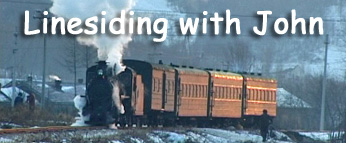

18 July 2009
This 762mm salt railway runs from the northern outskirts of Yingkou in an easterly direction to the salt fields. Yingkou is a typical example of an expanding Chinese town where everything is a long way and there is zero interest in strolling around the streets. The area near the railway is a mixture of industry, farm land and land being developed for the future expansion of the roads and the city.
The No. 1 Salt Factory is located on the (freight only?) China Rail line and is used for transhipment. It did not appear to be receiving raw salt or producing bagged salt.
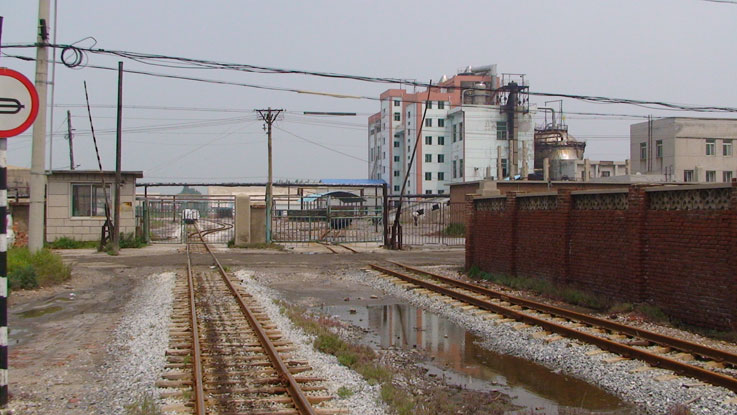
Shortly after the factory, the narrow gauge line crosses under the China Rail line. What are the chances of getting a train on both lines at the same time? Probably only with Photoshop!
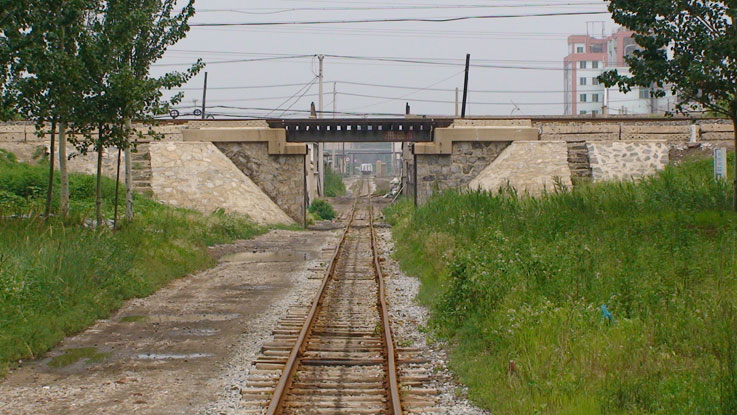
The line between No. 1 and No. 2 Factories was used by trains carrying bagged salt from No. 2. These trains returned empty to No. 2 about 1 hr later. Along the line (about 4 km), there are 2 passing loops which have seen recent use and 1 manned level crossing.
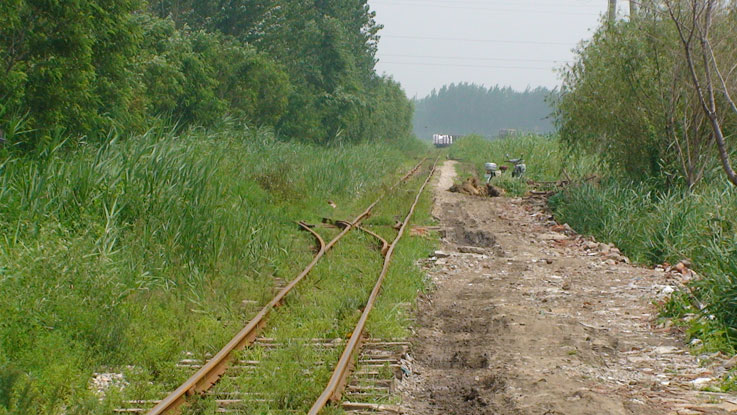
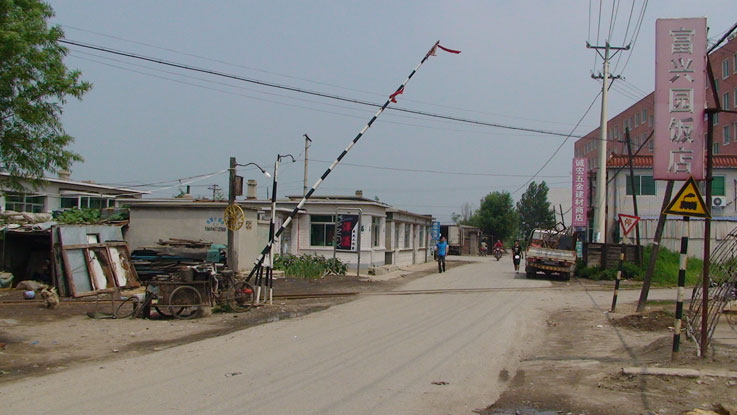
Like all of the salt railways we visited, the crossing keepers have no telephones and just listen out for trains. There is also no obvious traffic control on the single track lines although I would speculate that at Yingkou, empty trains give way to loaded trains if they meet. The empty train reversing to the nearest loop. A version of this was observed as beyond the No. 2 Factory, a level crossing was being reinstated across a road being widened. A PW train occupied the section but reversed away from any through train to the nearest loop in both directions. This was the PW train - the un-numbered loco has no windows in the front.

The only major feature on the line was a bridge over a canal just before the second factory.
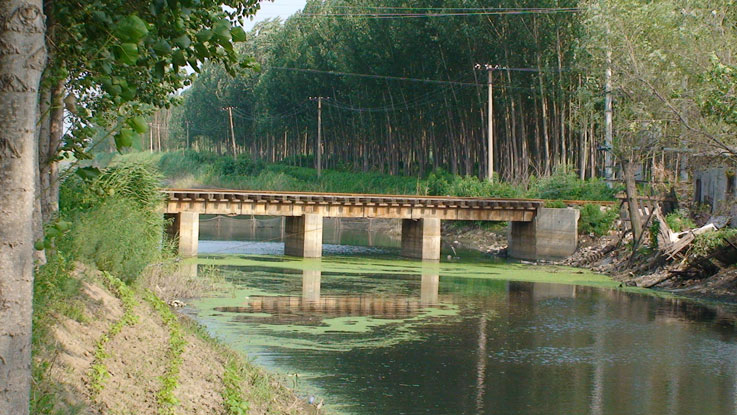
The second factory was down a short spur. This spur saw the most use of any section of the line with empties going to the fields and returning loaded as well as the bagged salt trains and their empty returns.
Loco No. 8 was on the trains to the salt fields.
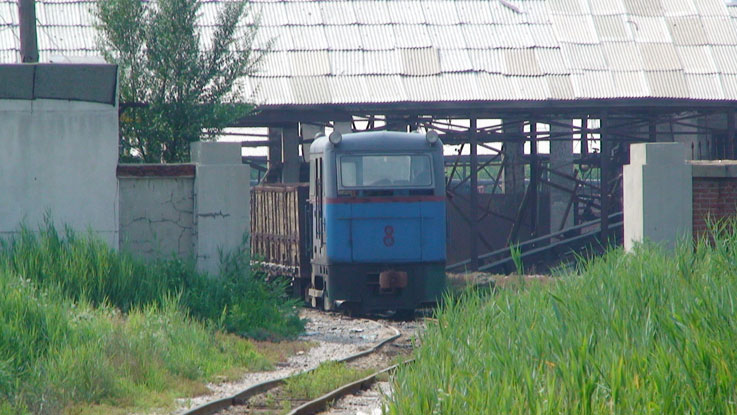
Although not visible here, the salt wagons were bogie wagons unlike the 4-wheel wagons on the other salt lines. The other loco No. 8 was on the bagged salt trips.
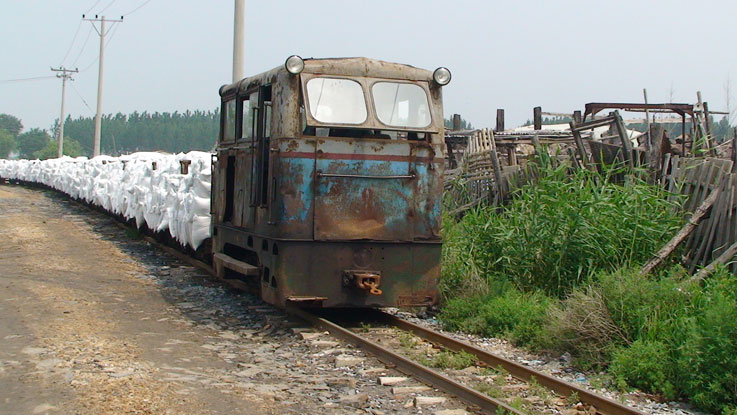
The crew coach on the PW train hinted at better times in the past, perhaps formerly used as a passenger coach.

With the No. 1 Factory not receiving fresh salt and with the disruption caused by the level crossing replacement, the line was quiet - perhaps unusually so. But, based on one trip, it's impossible to say. The line is clearly being retained as all modern construction is having to accommodate the line. However, the maps show 2 lines to different salt field with the split some distance out to the east. I believe that the line that use to head south may now be closed leaving only the eastern field served by rail. We crossed a line to the south that appeared out of use as our bus approached town.
John Raby
Yingkou